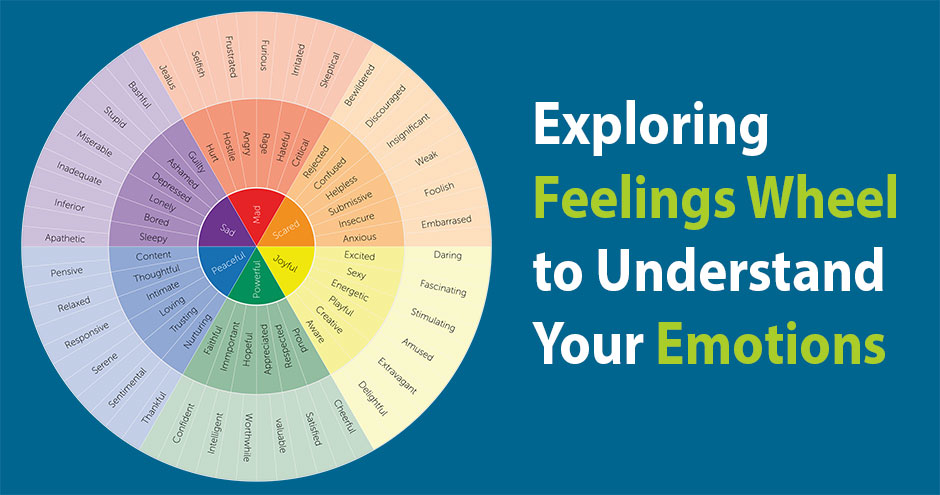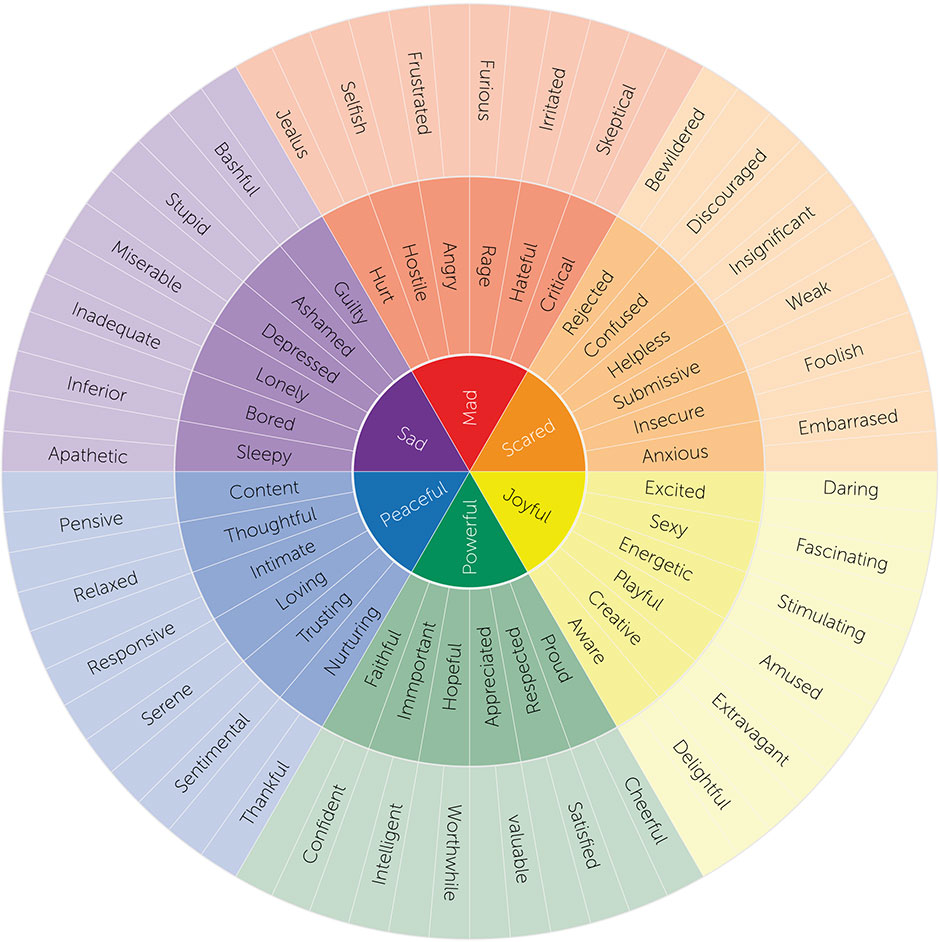Exploring Feelings Wheel to Understand Your Emotions
Last Updated: January 02, 2025
Tweet
What is an emotion?
Emotions are any positive or negative reactions that human beings experience in response to events or situations. An emotion is a knowing mental response subjectively experienced as a strong feeling, usually directed toward a specific object, and often accompanied by behavioral and physiological changes in the body. When emotions are separated from information or thinking, they can be instinctual or intuitive feelings. Sentiment, feeling, sensation, reaction, response, instinct, intuition, inclination, and sentimentality are a few synonyms for emotion.
Please click here to get the complete details on available programs, volunteer’s roles and activities , accommodation, cost, visa , vaccination, airport arrival and the rest of it.
Get More Info Now »
What is the Feeling Wheel?
The Wheel of Emotions is a model that was developed by American psychologist Robert Plutchik in 1980. He provided a powerful contribution to psychology and promoted the importance of understanding emotions. The Feeling Wheel is a way to show how people feel. It looks at different emotions by how intense they are and how they relate to each other. Plutchik says there are eight basic negative emotions that can come together to make up a bunch of different emotions.
The eight basic emotions include:

Pic Source: Wikimedia
- Trust
- The surprise
- Sadness
- Joy
- The fear
- Anger
- Anticipation
- Disgust
Anger is the opposite of fear, and sadness is the opposite of joy. Each basic emotion has an opposite polarity. The relationships between emotions are beautifully depicted in the Wheel of Emotions. Opposing emotions are cleverly positioned opposite each other in a circular arrangement, while intermediate emotions and combinations of emotions are thoughtfully placed in between.
What is the feeling wheels for?
It is used for the analysis of emotions. It is extremely interesting and valuable since it allows us to observe the course of emotions people go through visually. When we understand what we feel and why we feel it, we can better manage our impulses and give meaning to what happens to us. In the end, a better emotional understanding translates into greater clarity when solving problems and the way we react to them.
The Wheel of Feeling is used for identifying one’s emotions, detecting events that trigger people’s feelings, expressing emotions correctly, identifying alternative behaviors, and understanding and emphasizing the emotions of others. We find the use of the wheel of emotions in different areas of activity.
- to understand the influence of decisions and behaviors,
- to maintain motivation in learning
- in the psychology of the child,
- in identifying moments and feelings.
How does the feelings wheel work?
The easiest place to start when using the emotion wheel is at the center of the circle, where the central emotions are located. People can spin the puck to identify the more specific emotions to which it can assign or connect a need on the outer edges of the circle after selecting the most specific central emotion (joy, anger, fear, or sadness).
It is an essential tool for children to improve their emotional intelligence and an effective way to find solutions to their needs.
The goal of the wheel is to go through 3 stages:
- Identify how you feel
- Associate this feeling with an emotion
- Find what you need and associate this need with this emotion
Why should we use feelings wheels?
This tool is like an emotion chart, allowing you to express yourself and analyze your feelings. It also helps to clear up any confusion in communication. Teaching children to recognize and handle their emotions is a continuous process that doesn't end when they start primary or elementary school. When children are young, we discuss emotional co-regulation to assist them in managing their emotions. As they grow older, especially during their school years, this skill will enable them to become more independent in handling their emotions. Teaching children to regulate their emotions involves helping them recognize the causes of intense emotions, understand how their body reacts, and learn effective strategies to cope in the moment.
What does the feeling wheels consist of?
The outer, middle, and center circles make up the three sections of the wheel. The eight main emotions—joy, sadness, acceptance, disgust, fear, anger, surprise, and anticipation—are represented by the central circle. Each of the main emotions is subdivided into more specialized emotions in the middle circle. Emotions that fall under each of the middle circle emotions are further subdivided into the outer circle.
It is a teaching and personal development tool where that measures and develops the emotional intelligence of children and adults. The wheel of emotions, which is displayed as an infographic with color codes, shows the range of human affect. We realize that every emotion we experience is closely related to every other emotion.
How to use the feelings wheel to manage your emotions?
The Wheel of Feelings can serve as a tool to identify and manage your emotions. Some steps to follow to take advantage of this tool are as follows:
- Try using the Emotion Wheel to pinpoint the exact emotions you're experiencing right now. Take the time to describe them with precision, considering the subtle nuances and how different emotions may intertwine.
- After you've recognized your emotions, take a moment to figure out what caused them. It could be a particular incident, circumstance, or action.
- Pay attention to the patterns in your emotions, particularly when it comes to triggers and reactions. Identifying these patterns can assist you in foreseeing and handling your emotional responses in the days to come.
- Make sure to convey your emotions in a suitable manner, whether it's by confiding in a trusted individual, expressing your feelings through writing, or discovering alternative methods to externalize them.
- Learn effective ways to manage your emotions in a more positive manner by incorporating emotional regulation techniques. Explore the benefits of meditation, deep breathing exercises, or indulging in creative activities.
Why is it important to understand and manage our emotions?
It is crucial to understand our emotions and manage them because it helps you to communicate your emotions more effectively with others. It improves your interpersonal skills. It boosts your confidence and improves your decision-making. Additionally, it reduces your stress and helps you to promote healthy behavior. It enables you to increase your resilience during tough times.
Conclusion: Exploring Feelings Wheel of Emotions
5 images that will make you a better writer and marketer:
— Charles Miller (@charlesmiller_7) December 4, 2023
1. Feelings color wheel pic.twitter.com/FdqxQJITqD
Managing emotions is an essential part of our emotional, mental, and psychological well-being. By understanding our emotions and learning to manage them, we can better navigate our relationships, professional challenges, and our daily lives. Managing emotions is a skill that can be developed anywhere and at any time in our lives. With the help of the feeling wheels, it creates an environment where people can openly talk about their emotions and feelings by identifying them. It gives people space to know themselves on a whole different level.
Please click here to get the complete details on available programs, volunteer’s roles and activities , accommodation, cost, visa , vaccination, airport arrival and the rest of it.
Get More Info Now »


